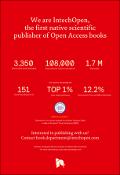Options
Spatio-temporal evolution of sediments pollution with mobile heavy metals in an abandoned mining area from Romania
Date issued
2018
Author(s)
DOI
10.5772/intechopen.70749
Abstract
The present chapter focuses on spatio-temporal evolution of sediments pollution with mobile heavy metals in ive sampling campaigns, in an abandoned gold-bearing mining area from Certeju de Jos, Hunedoara County. The investigated zone is situated in a region where for a long period intense activities of mining exploitation was conducted. For determination of total metals content, sediment samples were dissolved with ultra- pure nitric acid to microwave digestion. For the determination of mobile metals concentrations, it used the first step of BCR 701 sequential extraction scheme in a modified form, by reducing the extraction time from 16 hours to 20 minutes by sonication. The total and mobile concentrations of metals were determined by using ICP-MS. The concentrations of the mobile fractions of Cd, As and Cu are between 60 and 98% for Cd, 10 and 38% for As and up to 44% for Cu, indicating their presence in a bioavailable form. Due to the high mobility, these metals can pass from sediment to surface water and, implicitly, to the aquatic ecosystems. The pollution indices, calculated for the total content of As, Cd, Cu, Ni and Pb, indicate the presence of a strong environmental risk of sediment degradation in most investigated site.
Files
Loading...
Name
capitol carte Intech.pdf
Size
1.5 MB
Format
Adobe PDF
Checksum
(MD5):d013ee259113e32fca3b925e5ceb1e2b